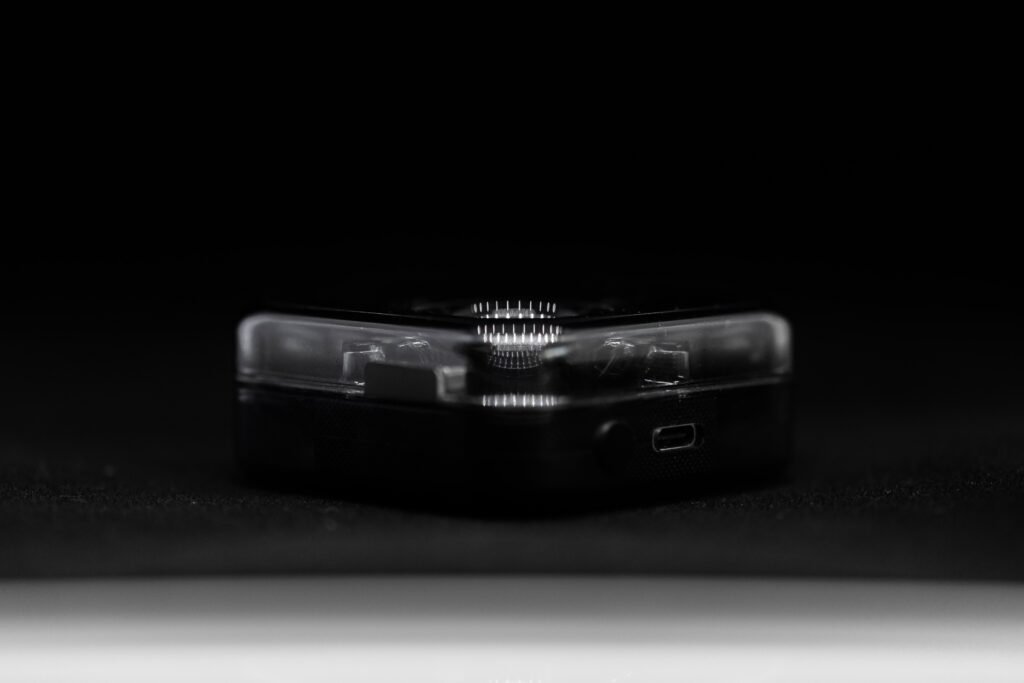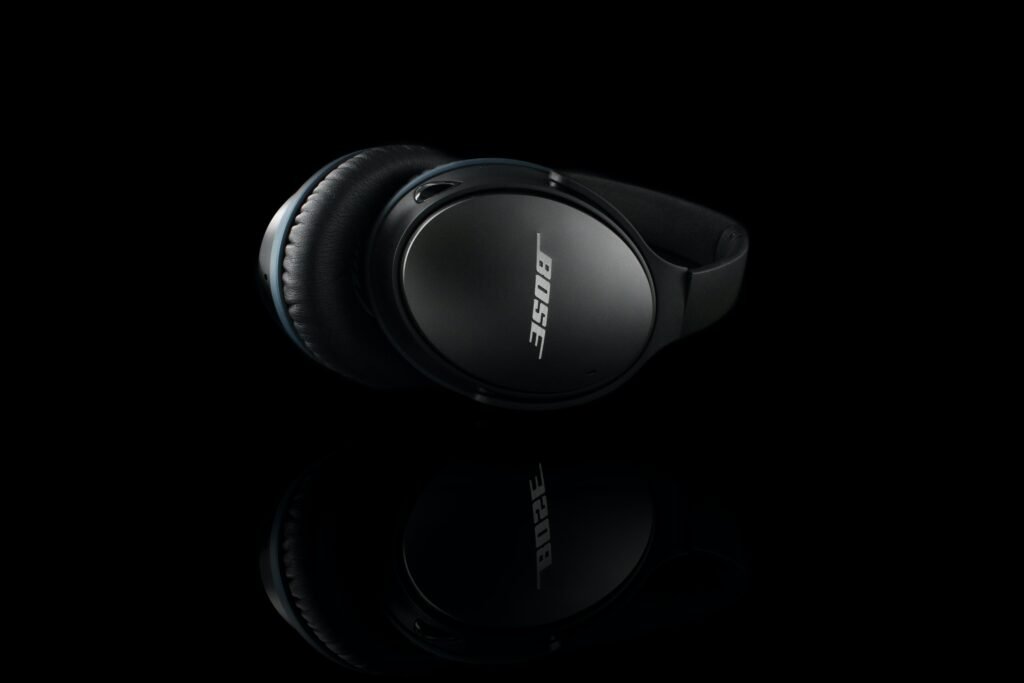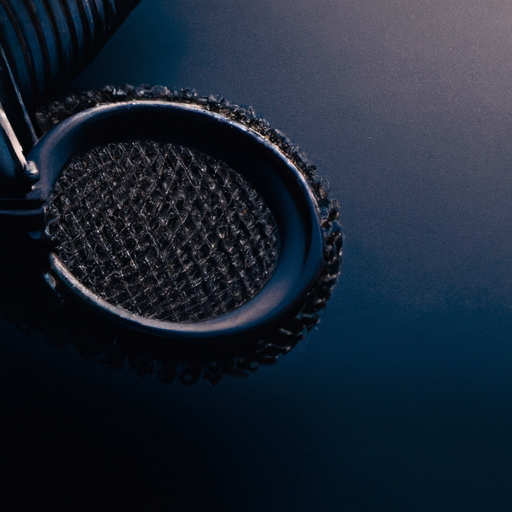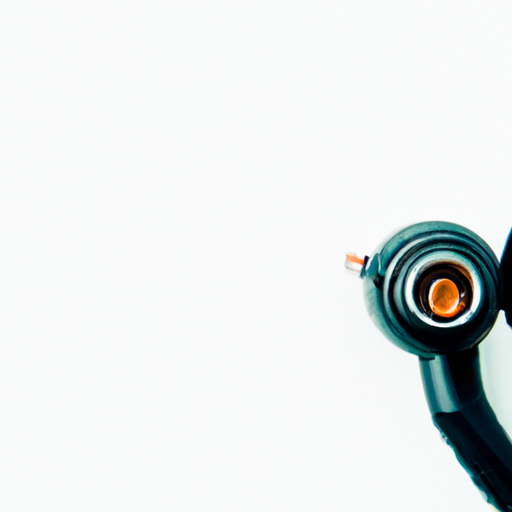Have you ever wondered how noise-canceling headphones work their magic? It’s quite fascinating! These clever headphones use advanced technology to reduce unwanted external sounds and provide you with a more immersive audio experience.
The mechanism behind noise-canceling headphones involves two main components: microphones and digital signal processing. Microphones are strategically placed on the headphones to analyze the external sounds around you. They pick up the ambient noise and send it to the digital signal processor, which then generates an equal but opposite sound wave. This counter sound wave, also known as anti-noise, is played through the headphones along with your desired audio, effectively canceling out the unwanted noise. It’s like having your own personal mute button for the world around you!
So next time you put on your noise-canceling headphones and enjoy your favorite music or podcast, take a moment to appreciate the intricate mechanism at work. It’s truly impressive how these headphones can create a peaceful sonic oasis amidst a noisy world. Keep exploring the wonders of technology and enjoy your immersive audio experience!
Overview
Introduction to noise-canceling headphones
Noise-canceling headphones are a remarkable innovation in the field of audio technology. These headphones are specifically designed to reduce or eliminate external noise, providing you with a more immersive and enjoyable listening experience. Whether you’re on a noisy commute, working in a bustling office, or simply trying to relax at home, noise-canceling headphones can be a beneficial investment.
Significance of understanding the mechanism
Understanding the mechanism of how noise-canceling headphones work is essential for appreciating their effectiveness and choosing the right pair for your needs. By gaining insight into the components, techniques, and principles involved, you can make an informed decision when purchasing noise-canceling headphones. So let’s dive into the mechanics of active noise cancellation and explore how these headphones deliver an uninterrupted audio experience.
Mechanism of Active Noise Cancellation
Components of active noise-canceling headphones
Active noise-canceling headphones consist of several key components that work together to reduce external noise. These components include microphones, noise-canceling circuitry, and speakers. Each component plays a vital role in the overall functioning of the headphones, allowing you to enjoy your music without any disturbances.
Microphone and feedback system
One of the essential components of active noise-canceling headphones is the microphone. The microphone located on the earcup picks up external sounds and feeds them into the noise-canceling circuitry. This circuitry analyzes the incoming noise and generates an anti-noise signal to counteract it. By continuously monitoring the sound environment, the headphones can effectively neutralize unwanted noise.
Noise-canceling circuitry
The noise-canceling circuitry is the heart of active noise cancellation. It receives the input from the microphone and generates a signal that is the exact opposite of the external noise. This generated signal, known as the anti-noise signal, is then mixed with the audio signal from your device to cancel out the unwanted noise. The circuitry is designed to produce the anti-noise signal in real-time, ensuring a seamless listening experience.
Speaker and noise reproduction
Once the noise-canceling circuitry generates the anti-noise signal, it is combined with the audio signal and played back through the speakers. The speakers produce sound waves that are essentially the negative counterpart of the external noise, thus cancelling it out. The result is a clean and clear audio output, free from any disturbances caused by external noise.
How the mechanism reduces external noise
The mechanism of active noise cancellation works by introducing a new sound wave, the anti-noise, which cancels out the external noise. This cancellation is achieved through destructive interference, where the peaks and troughs of the sound waves align in such a way that they cancel each other out. As a result, the external noise is effectively reduced, allowing you to immerse yourself in your music or audio content.

Passive Noise Isolation
Understanding passive noise isolation
Passive noise isolation is a method employed by noise-canceling headphones to block out external noise without the use of any active mechanisms. It relies on the physical design and materials of the headphones to create a barrier between your ears and the surrounding noise. By effectively blocking out external sounds, passive noise isolation enhances the overall sound quality and listening experience.
Role of ear cups and padding
The ear cups and padding are crucial elements of passive noise isolation. They are designed to create a seal around your ears, preventing sound from leaking in or out. The ear cups are typically lined with soft foam or cushioning material to ensure a comfortable fit while providing an effective noise-blocking barrier. This design feature helps in reducing the impact of external noise on your listening experience.
Sealing the ear canal
To achieve optimal passive noise isolation, it is essential for the headphones to create a proper seal around your ear canal. This seal prevents sound waves from entering or exiting the ear canal, effectively reducing external noise. Some noise-canceling headphones use specialized tips or earbuds that conform to the shape of your ear, further enhancing the seal and isolation.
Effectiveness of passive noise isolation
While active noise cancellation provides an advanced and technologically-driven solution, passive noise isolation is still highly effective in reducing external noise. With the combination of well-designed ear cups and a proper seal, passive noise isolation can significantly enhance your audio experience. It acts as the first line of defense against external noise, providing a solid foundation for active noise cancellation to build upon.
The Principle of Destructive Interference
Understanding destructive interference
Destructive interference is a phenomenon that occurs when two sound waves of the same frequency and amplitude combine in such a way that they cancel each other out. This principle forms the basis of noise cancellation in headphones. By generating an anti-noise signal that is out of phase with the external noise, active noise-canceling headphones create a scenario of destructive interference, minimizing the impact of external noise on your audio experience.
Superposition of sound waves
The cancellation of external noise is achieved through superposition – the combination of two sound waves. When the peaks of one wave align with the troughs of another wave, they cancel each other out, resulting in reduced noise. Active noise-canceling headphones utilize this principle by generating an anti-noise signal that is in perfect opposition to the external noise, effectively canceling it.
Cancellation of external noise
Once the anti-noise signal is generated, it is mixed with the audio signal, resulting in the cancellation of the external noise. The peaks and troughs of the sound waves align in such a way that they destructively interfere with each other, reducing or eliminating the external noise. This cancellation process creates a quieter environment for you to enjoy your favorite music, podcasts, or audiobooks.
Importance of anti-noise signal
The quality and accuracy of the anti-noise signal play a crucial role in the effectiveness of noise cancellation. The noise-canceling circuitry in active noise-canceling headphones is designed to analyze the external noise and generate an anti-noise signal that closely matches the noise profile. By continuously monitoring and adjusting the anti-noise signal, the headphones can adapt to changing sound environments, ensuring optimal cancellation performance.

Noise Measurement and Analysis
Methods for measuring noise levels
To assess the effectiveness of noise-canceling headphones, various methods are used to measure and analyze noise levels. Sound pressure level (SPL) meters and decibel meters are commonly employed tools for measuring the intensity of sound. These devices provide quantitative measurements of noise levels, allowing manufacturers and consumers to evaluate the performance of noise-canceling headphones.
Spectrograms and frequency analysis
In addition to measuring noise levels, spectrograms and frequency analysis are valuable tools for evaluating noise cancellation effectiveness. Spectrograms represent the time-varying amplitudes of different frequencies in a sound wave, providing a visual representation of the frequency content of noise. By analyzing spectrograms, it is possible to determine the frequencies at which noise cancellation is most effective and identify any potential weaknesses in the cancellation performance.
Analyzing noise cancellation effectiveness
When analyzing the effectiveness of noise cancellation, it is important to consider both the overall reduction in noise level and the specific frequency bands that are affected. A comprehensive analysis takes into account the ability of noise-canceling headphones to neutralize different types of noise, such as constant low-frequency noise or sudden bursts of noise. Through careful measurement and analysis, manufacturers strive to continually improve the noise cancellation capabilities of their headphones.
Active vs. Passive Noise Cancellation
Comparison between active and passive noise cancellation
Active and passive noise cancellation are two distinct methods used in noise-canceling headphones. While both approaches aim to reduce external noise, they differ in their mechanisms and effectiveness. It is important to understand the advantages and limitations of each technique in order to choose the right type of headphones for your specific needs.
Advantages and limitations of each
Active noise cancellation offers the advantage of actively generating an anti-noise signal to cancel out external noise, providing a more immersive and uninterrupted listening experience. It is highly effective in reducing constant low-frequency noise, such as the rumble of an airplane engine or the hum of a busy office. However, active noise cancellation may have limitations in canceling sudden bursts of noise or certain frequencies outside its cancellation range.
Passive noise cancellation, on the other hand, relies on the physical design and materials of the headphones to block out external noise. This method is effective in reducing a wide range of frequencies and does not require any additional power source. However, passive noise cancellation may not be as effective as active noise cancellation in reducing low-frequency noise or canceling transient sounds.
When to use active or passive technology
The choice between active and passive noise-canceling headphones depends on your specific requirements and preferences. Active noise cancellation is ideal for environments with constant low-frequency noise, such as airplanes or busy offices. It provides a more immersive audio experience by actively canceling out external noise. On the other hand, passive noise cancellation is suitable for situations where you need a general reduction in noise and do not want to rely on batteries or additional electronics.

Types of Noise and their Cancellation
Differentiating between continuous and impulsive noise
Noise can be broadly categorized into two types: continuous and impulsive. Continuous noise refers to a steady and unchanging noise source, such as the hum of an air conditioning unit or the background noise in a coffee shop. Impulsive noise, on the other hand, refers to sudden bursts of noise, like a car horn or a door slamming shut. Both types of noise pose challenges for noise-canceling headphones, but different techniques can be used to address them.
Canceling constant low-frequency noise
Active noise-canceling headphones excel at canceling constant low-frequency noise. By generating an anti-noise signal that is precisely timed and aligned with the external noise, these headphones can effectively reduce the impact of low-frequency noise on your audio experience. This makes them particularly well-suited for environments where continuous noise is a prevalent factor.
Addressing sudden bursts of noise
While active noise cancellation is effective in reducing continuous noise, it may struggle to cancel sudden bursts of noise, especially if the bursts occur outside the headphones’ cancellation range. In such cases, passive noise isolation plays a crucial role in reducing the impact of impulsive noise. The physical barrier created by the design of the headphones helps limit the intrusion of sudden bursts of noise, minimizing their disruptive effect.
Innovations in Noise-Canceling Technology
Recent advancements in noise-canceling headphones
Noise-canceling technology has seen significant advancements in recent years, leading to the development of more sophisticated and efficient headphones. Manufacturers have been constantly improving the noise-canceling circuitry, enhancing the accuracy and performance of the anti-noise signal. This has resulted in more effective noise cancellation across a wider range of frequencies.
Adaptive noise cancellation
One notable innovation in noise-canceling technology is adaptive noise cancellation. These headphones feature advanced algorithms that continuously adapt the anti-noise signal to match the changing sound environment. By dynamically adjusting the cancellation parameters, adaptive noise-canceling headphones provide optimal noise reduction in real-time, regardless of the noise characteristics.
Combining active and passive methods
Some manufacturers have taken a hybrid approach by combining active and passive noise-canceling methods. These headphones utilize both active noise cancellation circuitry and well-designed physical structures to provide a comprehensive noise cancellation experience. By leveraging the strengths of both techniques, these headphones offer enhanced noise reduction across a broader range of frequencies and noise types.
Noise-canceling enhancements in wireless headphones
Wireless headphones have also seen significant improvements in noise-canceling capabilities. With the elimination of wires, wireless noise-canceling headphones offer greater freedom of movement while still providing an immersive audio experience. Manufacturers have also focused on increasing battery life and improving the power efficiency of wireless noise-canceling headphones, ensuring extended usage without compromising on noise cancellation performance.

Considerations for Purchasing Noise-Canceling Headphones
Price range and budget
Price range and budget are important factors to consider when purchasing noise-canceling headphones. While high-end models may offer the most advanced features and superior noise cancellation performance, there are also budget-friendly options available that provide satisfactory noise reduction. It is essential to strike a balance between your requirements and your budget to make an informed decision.
Battery life and power source
Active noise-canceling headphones require a power source to operate the noise-canceling circuitry. Be sure to consider the battery life of the headphones and the convenience of recharging or replacing batteries. Additionally, some models offer the option of using the headphones without noise cancellation when the battery is depleted, ensuring uninterrupted audio playback.
Comfort and fit
Comfort and fit should not be overlooked when selecting noise-canceling headphones. Consider the design of the headphones, the materials used in the ear cups and headband, and the adjustability of the fit. A comfortable pair of headphones will allow you to wear them for extended periods without discomfort, ensuring an enjoyable listening experience.
Sound quality and audio performance
While noise cancellation is a primary feature of these headphones, sound quality and overall audio performance should not be neglected. Look for headphones that provide balanced and accurate sound reproduction across various frequencies. It is also worth considering additional features such as customizable sound profiles or built-in equalizers, which can enhance the audio experience further.
Uses Beyond Personal Listening
Applications of noise-canceling headphones in diverse settings
Beyond personal listening, noise-canceling headphones have found applications in various settings. They have become invaluable tools in industries where noise reduction is essential for communication and safety, such as aviation and heavy industries. Additionally, noise-canceling headphones are widely used by professionals who need to concentrate in noisy environments, students studying in busy libraries, and individuals seeking tranquility during their daily commute.
Professional use in aviation and industries
In professions where noise is a constant presence, such as aviation and industrial settings, noise-canceling headphones are crucial for maintaining clear communication and ensuring a safe working environment. Pilots, air traffic controllers, and industrial workers rely on noise-canceling headphones to minimize the impact of background noise and focus on essential audio cues.
Enhancing concentration and focus
Noise-canceling headphones are highly effective in enhancing concentration and focus, making them popular among students and professionals. In noisy environments such as libraries, coffee shops, or open office spaces, noise-canceling headphones create a bubble of silence, allowing individuals to study or work without distractions. They can be a valuable tool for productivity and maintaining a focused mindset.
Utilization in public spaces and commuting
Noise-canceling headphones are also widely used by individuals in public spaces and during commuting. Whether it is a noisy subway ride or a crowded airport, noise-canceling headphones create a personal sanctuary by reducing the impact of external noise. They allow you to enjoy your favorite music, podcasts, or audiobooks without being disturbed by the hustle and bustle of the surrounding environment.
In conclusion, noise-canceling headphones have revolutionized the way we listen to audio by providing an immersive experience free from external noise. Understanding the mechanism of noise cancellation, the different types of noise, and the advancements in noise-canceling technology is crucial in selecting the right pair of headphones for your needs. Whether for personal listening or professional use, noise-canceling headphones offer a range of benefits, enabling you to enjoy your audio content in any environment.

